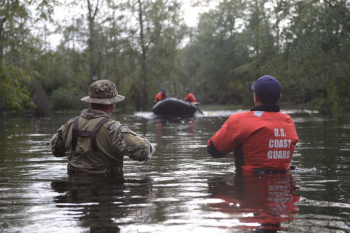Farmers, fishermen and residents in the easternmost regions of North Carolina are dealing daily with the effects of climate change, though they may have other explanations for what they experience.
“Changing Minds On Climate Science” is a multipart series that goes beyond Coastal Review Online’s daily reporting on coastal environmental issues and the people here to examine the latest climate science as it pertains to the region, including how coastal residents’ attitudes and perceptions of climate science have or have not changed during the past decade.

The series, which is produced in partnership with the Pulitzer Center, is part of Connected Coastlines, a nationwide climate reporting initiative in coastal states. The initiative is building a consortium of newsrooms and independent journalists across America to report on the local effects of erratic weather patterns on coastal populations using the latest climate science.
Our series gauges whether the devastating hurricanes of recent years and other effects of sea level rise and climate change on the North Carolina coast have changed minds and policy in a state that a decade ago became infamous for passing legislation to ban the use of climate modeling in planning and regulation.
We bring in the voices of not only scientists but also of those, young and old, who call the North Carolina coast their home and have experienced firsthand the effects of climate change and sea level rise. The reports bring into perspective the recent pattern of record-breaking hurricanes, Matthew, Florence and Dorian, and the lives affected, along with other changes, such as saltwater intrusion, sunny-day flooding, economic disruption and soaring infrastructure costs. The series also examines the government response, particularly at the state and local levels.
Read the series at coastalreview.org.
